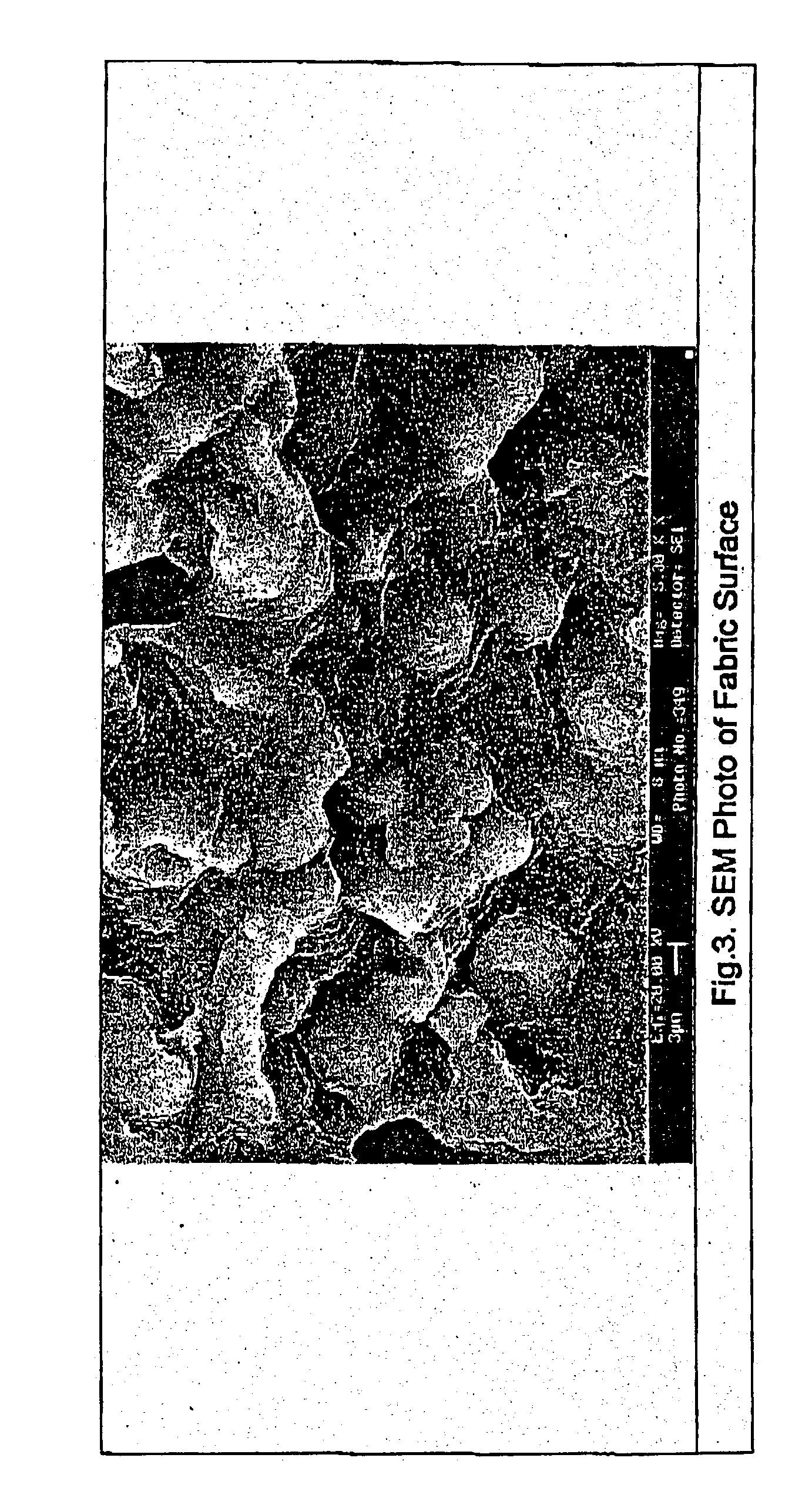Method for encapsulating phase transitional paraffin compounds using melamine-formaldehyde and microcapsule resulting therefrom
a technology of encapsulation and paraffin compounds, which is applied in the field of encapsulation of phase transitional paraffin compounds using melamineformaldehyde and microcapsules resulting therefrom, can solve the problems of ineffective control of residual formaldehyde in the emulsion, inability to achieve solubility compatibility, and still suffer from some drawbacks
- Summary
- Abstract
- Description
- Claims
- Application Information
AI Technical Summary
Benefits of technology
Problems solved by technology
Method used
Image
Examples
examples
[0067] This invention is now illustrated by the following examples, which shall not be interpreted as limiting.
[0068] EXAMPLE 1: Preparation of the Melamine-Formaldehyde Precondensate
[0069] Add 2.5 g of melamine to 3.6 g of formaldehyde (35-39% aqueous solution) and then 5 g of water is added to the system. Stirring the system at 70.degree. C. for around 1 hour to form a transparent solution. Cool the system to 33.degree. C.
example 2
[0070] Preparation of Microcapsule Emulsion Using PSMS as the Protective Colloid and TDI as the Deposition Promoter
[0071] Add 2.5 g of Poly(Styrene-alt-Maleic Acid) Sodium Salt (30% in water, average Mw ca. 120,000) in 57.5 g of water and then adjust bath pH to 5.
[0072] Melt 30 g of octadecane at 33.degree. C. and then respectively add 0.15 g of polypropylene glycol (average Mw ca. 2,000) and 0.1 g of tolylenediusocyanate, TDI, (80%). Mix the system well and keep it thermostat. Add the core composition prepared above to the protective colloid solution at 31-33.degree. C. and then vigorously stir the system at 2,000 rpm for 10 to 15 minutes. Decrease the stirring to 400-600 rpm and gradually add the melamine-formaldehyde precondensate solution to the bath and then continue the stirring for 10 minutes. Check bath pH and adjust it to 5.6 if necessary. Raise the bath to 70.degree. C. and then continue the reaction for 2 hours. Add 0.4 g of ethylene urea to the bath and then continue th...
example 4
[0075] Preparation of Microcapsule Emulsion Using Polyacrylic Acid as the Protective Colloid and TDI as the Deposition Promoter
[0076] All the procedures are as same as those indicated in example 2 except that 3.5 g of polyacrylic acid (25% in water, average Mw ca 230,000) other than PSMS is used as the protective colloid.
[0077] EXAMPLE 5: Preparation of Microcapstile Emulsion Using Polyacrylic Acid as the Protective Colloid and HDI as the Deposition Promoter
[0078] All the procedures are as same as those indicated in example 4 except that 0.1 g of HDI other than TDI is added as the deposition promoter.
PUM
 Login to View More
Login to View More Abstract
Description
Claims
Application Information
 Login to View More
Login to View More - R&D
- Intellectual Property
- Life Sciences
- Materials
- Tech Scout
- Unparalleled Data Quality
- Higher Quality Content
- 60% Fewer Hallucinations
Browse by: Latest US Patents, China's latest patents, Technical Efficacy Thesaurus, Application Domain, Technology Topic, Popular Technical Reports.
© 2025 PatSnap. All rights reserved.Legal|Privacy policy|Modern Slavery Act Transparency Statement|Sitemap|About US| Contact US: help@patsnap.com



